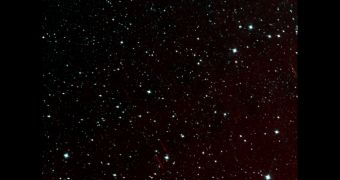Officials at the American space agency have recently recommissioned the Wide-field Infrared Survey Explorer (WISE) telescope, which was inactivated a couple of years ago at the end of its primary science mission. Now called NEOWISE, the spacecraft will scan the skies for signs of near-Earth objects (NEO).
These objects include asteroids, comets and meteors that fly close to Earth, or which are on a collision course with our planet. Many of them are relatively small, making them very difficult to detect. Infrared telescopes such as WISE are perfect for finding NEO, but they are found in very short supply.
This is one of the main reasons why NASA decided some time ago to reactivate the dormant spacecraft. Though not as sensitive as it was before, due to the fact that its coolant has run out, the telescope is still capable of conducting very sensitive surveys of our planet's neighborhood in the solar system.
NEOWISE has not started officials yet, but the observatory has already begun collecting images, so that mission controllers can begin calibrating its sensitive instruments. These detectors are especially well suited for finding comets and asteroids.
Between 2009 and 2011, the original WISE mission was able to characterize around 158,000 objects in the solar system, including 34,000 asteroids. NASA scientists hope to increase that number even further, and create a catalog of as many NEO as possible, Astrobiology Magazine reports.
WISE spent 31 months in hibernation before being reactivated in September 2013. Its main instrument is a 40-centimeter (16-inch) telescope that feeds light in a series of infrared cameras tuned to different frequencies.
“NEOWISE not only gives us a better understanding of the asteroids and comets we study directly, but it will help us refine our concepts and mission operation plans for future, space-based near-Earth object cataloging missions,” says NEOWISE principal investigator Amy Mainzer.
“The spacecraft is in excellent health, and the new images look just as good as they were before hibernation,” adds the expert, who holds an appointment at the NASA Jet Propulsion Laboratory (JPL), in Pasadena, California.
“Over the next weeks and months we will be gearing up our ground-based data processing and expect to get back into the asteroid hunting business, and acquire our first previously undiscovered space rock, in the next few months,” Mainzer concludes.

 14 DAY TRIAL //
14 DAY TRIAL //